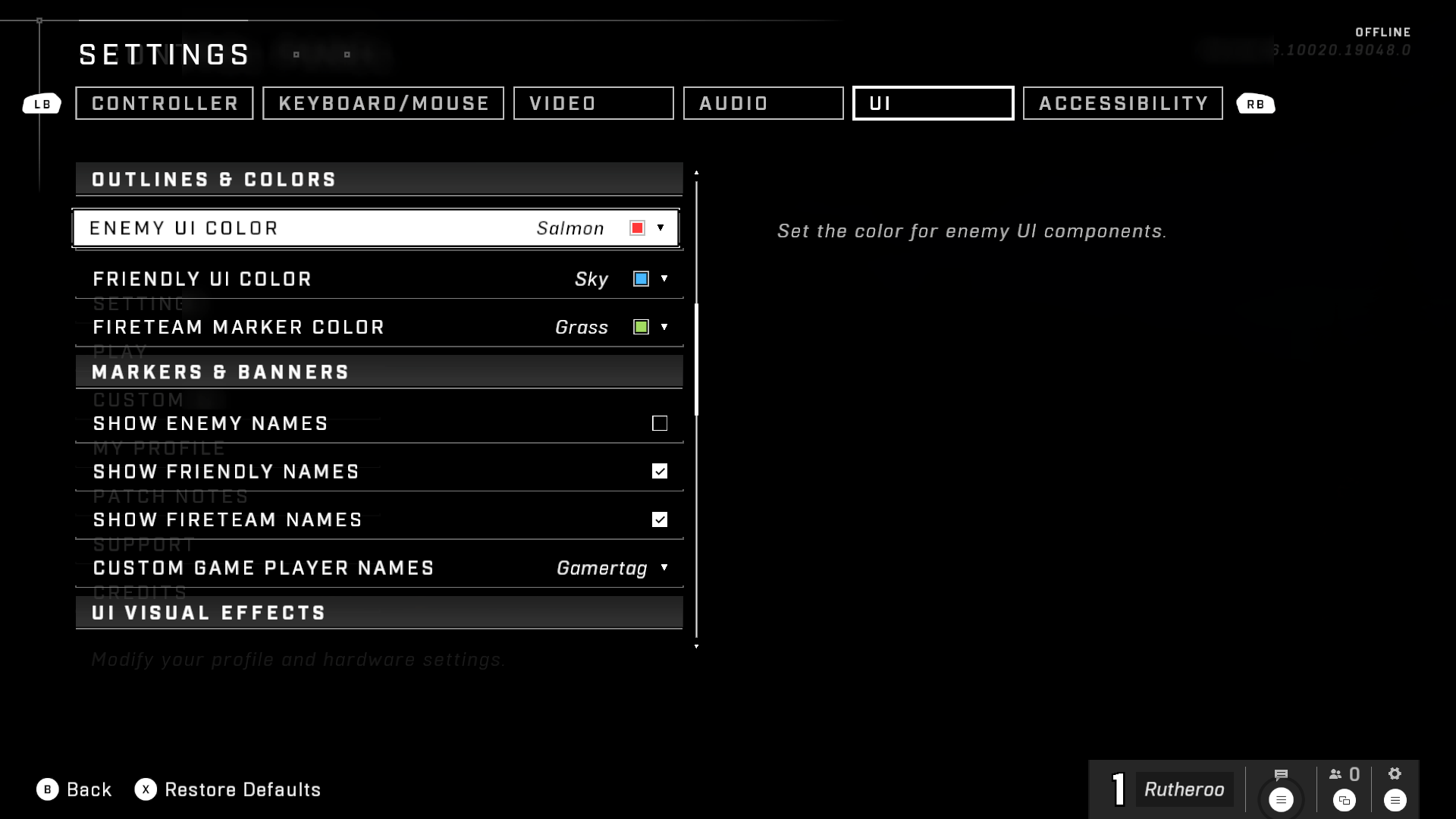Accessibility was more visible than ever in 2021, but not always in a way that's helpful
2021's tentpole releases have taken two steps forward, one step back.

If last year was a tipping point for accessibility in games becoming visible, then this year has been a weathervane—indicating the direction developers are committing to. While it can feel like disabled critics and advocates are constantly arguing that we have a right to be here, a lot of studios already recognise this and are making games for and marketing to us. Accessibility in games has never been more visible—but that visibility is, itself, something to question.
Numerous high profile games actively included information about accessibility in their marketing this year, releasing news about their accessibility menus and features ahead of release. It is, however, much easier to talk about the presence of features than the absence of barriers. You never see reports saying 'Latest Franchise Add Promises To Not Have Teeny Tiny Text', or 'Upcoming Blockbuster Will Never Spin Camera Round Nauseatingly Fast'. Releasing news about games’ accessibility ahead of time is a good thing—telling disabled audiences that they are welcome and giving them information they need about playing an upcoming game—but it also angles public conversation about accessibility in a certain way.

Microsoft is one of the largest publishers to be particularly vocal about accessibility in both its games and hardware. Both its tentpole releases this year—Forza Horizon 5 and Halo Infinite—included accessibility news as part of their pre-release marketing. And while both games made highly visible efforts to include disabled players, the results have been mixed, with disabled critics praising one and panning the other.
Both Forza and Halo Infinite sport comprehensive accessibility menus available on start up—with Halo Infinite making it one of the first things you see. Both games also allow you to make your character visibly disabled by including prosthetic limbs as part of character customisation options. While these are clear and visible steps to include disabled players, the actual accessibility of both games is surprisingly different—demonstrating equally opposite problems to each other.
Navigating Forza's settings as a disabled player is an oddly fragmented experience. The section relating to accessibility is very specific, including customisable settings for things like colour-blindness, subtitles, text-to-speech and game speed. Some of them are relevant to me—I'll come back to game speed—but some settings that deeply affect how accessible a game is are in other menus. Vibration settings in 'gameplay', adjusting the audio levels in 'audio', control remapping in 'controls'. Many of its comprehensive difficulty settings feel necessary to me from a motor accessibility perspective, but they're also things accessibility advocate Steve Saylor highlighted in his Forza Horizon 5 review as beneficial to him as a blind player.
Access optional

It’s easy to isolate which settings specifically impact barriers I personally experience, but as accessibility consultant Cherry Thompson recently discussed at this year’s Global Accessibility Conference, "all options are for everyone, and all options increase accessibility". All players are navigating the interactions of our hardware, our software and our bodies, and negotiating how much friction there is in the places where they meet.
When you put a set of options behind a special menu, there will be a number of players who don’t look at them. Accessible design always has myriad more benefits than any one specific barrier it's intended to address—the 'subtitles being good for when you're eating loud snacks' example being eternal—but as soon as you identify it as being for an accessibility need, people will ignore it, regardless of how they might benefit. Relatedly, it communicates that some settings are about how the game is meant to be adjusted, and how some are ‘extra’—which you can still feel the effect of in many games. Turning off quick-time events only to watch an urgently pulsing UI prompt that expects you to be mashing a button is all too common, and it doesn't feel urgent so much as it feels a little wrong.
Keep up to date with the most important stories and the best deals, as picked by the PC Gamer team.
All options are for everyone, and all options increase accessibility.
Cherry Thompson
Forza’s awkward-to-navigate settings are all the stranger because of how accessible it is elsewhere. When I started playing it, with all the difficulty settings on default, it felt impossible to control my car. I over-steered, I ground to a halt constantly, and I lost both literal and metaphorical momentum every few seconds. While I acceded some control of the car to the game's AI, what was key to getting driving to feel right was knocking the game speed down to 85%, giving me that fraction of a second more to react. It's a setting I have never seen in any other game, and that I now desperately want in every game I play.
The accessibility settings may have allowed me to control my cars, but I'm still really bad at driving—it's just fun, now. To drive badly, in a way that feels good and correct, means crashing through barriers, decapitating cacti, and racking up silly high points bonuses. Not crashing into trees, stalling, and feeling frustrated with my hands. Forza makes room for 'correct' play to be all things—to quite literally autopilot through Mexico, sideswipe off a cliff, or try to shave milliseconds off a personal best. Settings alone can't create that experience.
Infinite discomfort

Where Forza has an awkwardly communicated menu but an accessible core design, Halo Infinite is the inverse. It presents its accessibility menu upfront the first time you boot up the game, but every element in this section is also present in every other section. In its presentation, it's significantly less othering—but to go deeper than surface level, it's far less accessible to play.
In Ben Bayliss’s review for accessibility outlet Can I Play That, he opens with the caveat that with Xbox’s history, it’s easy to assume that Halo will be accessible, but "it’s important to note that the number of accessibility options available does not determine if a game is accessible, and Halo Infinite seems to be a perfect example of that."
The "clumsy implementation" of the accessibility features he critiques is something I encountered in my time with Halo as well. Things that initially looked helpful didn’t really hold up—like full controller remapping that still didn’t let me avoid using stick-clicks in any way. Much like those awkward QTE opt-outs, setting functions to ‘toggle’ instead of ‘hold’ never feel right either. During the end of the first mission, when I was meant to be sprinting through a collapsing station, Master Chief kept slowing down to a leisurely walk every few seconds, making the timed seams of the level design painfully visible.

More than anything else, the main experience is simply uncomfortable to play. Halo Infinite’s design prioritises mobility and aggression. It wants you to constantly think on your feet, switching between your guns, melee, grenades and tools. Your ammo burns out quickly, you’re vulnerable if you stand in the same place for too long and you're expected to get in an enemy's face—not only to punch them, but to take their gun when they fall. If this core loop exhausts you, if your reaction speed is not fast enough, if it's information overload, there are no settings that will mitigate what is fundamental to the Halo experience.
The game’s design itself even acknowledges that this kind of play is overwhelming. You do it for a few minutes at a time, in segments broken up by traversal, cutscenes and searches for batteries. But this pacing is designed with only some players’ limits in mind, and Infinite’s campaign is intentionally more challenging than any of its series’ predecessors
An accessible game is one where accessibility is at the core of its design. Explicit accessibility settings might communicate to disabled players that you're considering their needs, but accessible game design is more complex than that. As Thompson said in their talk, "An option might facilitate accessibility, other times it’s a bandage over the problem. It’s not accessibility itself."

When the most highly visible games dictate the trends in how games approach accessibility, 2021 leaves me with mixed feelings. It's exciting to feel like a player that developers are actively courting, and not like I'm sometimes 'lucking in' to being able to play a game. Marketing on a game’s accessibility, and making their features and settings so highly visible, is a statement of intent: disabled players are welcome here.
At the same time, I’m left feeling cautious that only the most visible work—that by virtue of its visibility separates disabled players from others—will be picked up and reproduced. The work of making a game's design accessible in the early stages of production is still often only acknowledged in niche spaces. It's the difference between having intercoms on a train platform to ask someone to get a ramp for me and having accessible platforms to just get on a train unassisted. It's nice to be going somewhere; it’s difficult not to feel othered.

